
This is a lab manual for Basic Human Anatomy.
- Subject:
- Anatomy/Physiology
- Life Science
- Material Type:
- Activity/Lab
- Provider:
- Indiana University
- Author:
- Michele Zimmerman
- Teresa Gannon
- Date Added:
- 10/19/2020
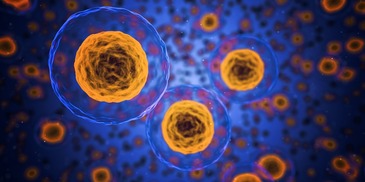
Anatomy and Physiology, Biology, Botany, Ecology, Genetics, Nutrition and Zoology Textbooks.

This is a lab manual for Basic Human Anatomy.
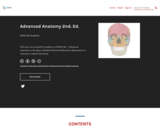
Short Description:
This text was created by students in PHED 301 - Advanced Anatomy in the Sport, Health & Physical Education department at Vancouver Island University.
Word Count: 115766
(Note: This resource's metadata has been created automatically by reformatting and/or combining the information that the author initially provided as part of a bulk import process.)
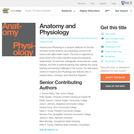
Anatomy and Physiology is a dynamic textbook for the two-semester human anatomy and physiology course for life science and allied health majors. The book is organized by body system and covers standard scope and sequence requirements. Its lucid text, strategically constructed art, career features, and links to external learning tools address the critical teaching and learning challenges in the course. The web-based version of Anatomy and Physiology also features links to surgical videos, histology, and interactive diagrams.
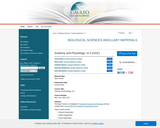
This Open Course is an adaptation of OpenStax Anatomy and Physiology and was created under a Round Nine ALG Textbook Transformation Grant.
Topics covered include:
Chemical Organization
Cellular Organization
Tissue Organization
Integumentary System
Skeletal System
Muscular System
Nervous System
Endocrine System
Cardiovascular System
Lymphatic System
Respiratory System
Digestive System
Reproductive System
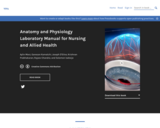
Word Count: 741633
(Note: This resource's metadata has been created automatically by reformatting and/or combining the information that the author initially provided as part of a bulk import process.)

This set of anatomy videos illustrating parts of the human body was created under a Round Eleven Mini-Grant for Ancillary Materials Creation.
Topics include:
Axial Skeleton
Appendicular Skeleton
Muscles
Nervous System
Anatomy of the Senses
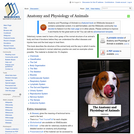
Veterinary nurses need to have a firm grasp of the normal structure of an animal’s body and how it functions before they can understand the effect diseases and injuries have and the best ways to treat them. This book describes the structure of the animal body and the way in which it works. Animals encountered in normal veterinary practice are used as examples where possible.

El presente manuscrito es resultado de investigaciones multidisciplinarias bajo diferentes perspectivas científicas-académicas, mediante la confrontación de criterios de diferentes autores bajo un enfoque descriptivo que señala la importancia de ética en varios escenarios actuales como son en la discriminación de la mujer en ambiente laboral, el manejo de los individuos dentro de las organizaciones, dentro de la agricultura al momento de producir y cultivar, como la ética afecta al clima organizacional y lagestión docente dentro del caso de estudio de una universidad, la ética y la responsabilidad social empresarial como reto de las empresas, la discriminación laboral como comportamiento poco ético en el área de recursos humanos, y por ultimo una contrastación de la ética en la publicidad de las empresas. Estos estudios se realizan desde una mirada científica y se la acerca a la realidad ecuatoriana.
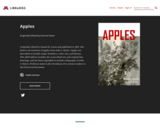
Short Description:
Originally edited by Samuel B. Green and published in 1897, this book is an inventory of apples from John S. Harris. Apples are described to include origin, hardiness, color, size, and disease. This 2019 edition includes the transcribed text and original line drawings, and has been expanded to include a biography of John S. Harris. Professor James Luby introduces 21st century readers to this historical document.
Word Count: 20069
ISBN: 978-1-946135-56-8
(Note: This resource's metadata has been created automatically by reformatting and/or combining the information that the author initially provided as part of a bulk import process.)
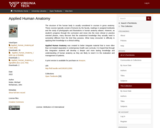
The structure of the human body is usually considered in courses in gross anatomy. These courses typically consist of lectures by the faculty, readings in assigned textbooks and the study of photographs and illustrations in human anatomy atlases. However, as student’s progress through the curriculum and move into the more clinical or practice oriented phases, many discover that the anatomical knowledge they actually need is somewhat different from the kind they possess. What many encounter is difficulty in applying their knowledge to a clinical setting.
Applied Human Anatomy was created to better integrate material that is more often than not treated separately in contemporary health care curricula. It is hoped that through this integration students will develop a deeper and more lasting knowledge and understanding of human anatomy as they are likely to need it in the evaluation and management of patients.
A print version is available for purchase on Amazon.

A grasp of the logic and practice of science is essential to understand the rest of the world around us. To that end, the CMB4e iText (like earlier editions) remains focused on experimental support for what we know about cell and molecular biology, and on showing students the relationship of cell structure and function. Rather than trying to be a comprehensive reference book, CMB4e selectively details investigative questions, methods and experiments that lead to our understanding of cell biology. This focus is nowhere more obvious than in the chapter learning objectives and in external links to supplementary material. The Basic CMB3e version of the iText includes links to external web-sources as well as the author’s short, just-in-time YouTube VOPs (with edited, optional closed captions), all embedded in or near relevant text. Each video is identified with a descriptive title and video play and QR bar codes.
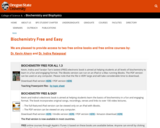
We are happy to welcome you to our second Open Educational Resource (OER) textbook, Biochemistry Free For All. Biochemistry is a relatively young science, but its rate of growth has been truly impressive. The rapid pace of discoveries, which shows no sign of slowing, is reflected in the steady increase in the size of biochemistry textbooks. Growing faster than the size of biochemistry books have been the skyrocketing costs of higher education and the even faster rising costs of college textbooks. These unfortunate realities have created a situation where the costs of going to college are beyond the means of increasing numbers of students.
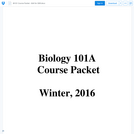
Lab Manual for BIO101 at Mt Hood Community College. The associated textbook is available at https://openoregon.pressbooks.pub/mhccbiology101/
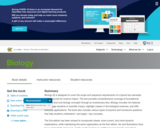
Biology 2e is designed to cover the scope and sequence requirements of a typical two-semester biology course for science majors. The text provides comprehensive coverage of foundational research and core biology concepts through an evolutionary lens. Biology includes rich features that engage students in scientific inquiry, highlight careers in the biological sciences, and offer everyday applications. The book also includes various types of practice and homework questions that help students understand—and apply—key concepts.

By the end of this section, you will be able to:Understand the fluid mosaic model of cell membranesDescribe the functions of phospholipids, proteins, and carbohydrates in membranesDiscuss membrane fluidity
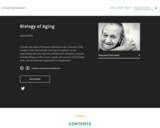
Short Description:
Includes the study of the gross and microscopic structure of the systems of the human body with special emphasis on the relationship between structure and function. Integrates anatomy and physiology of cells, tissues, organs, the systems of the human body, and mechanisms responsible for homeostasis.
Word Count: 134931
(Note: This resource's metadata has been created automatically by reformatting and/or combining the information that the author initially provided as part of a bulk import process.)

This is a one-semester course covering various aspects of human reproduction, from anatomy and physiology of the reproductive systems to genetics to assisted
reproductive technologies, etc. The text currently in use is not only expensive but also dated,
with a publication date of 2005. I will redesign the course to include all topics listed in the
college course description, in module format. I
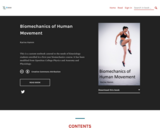
Short Description:
This is a custom textbook catered to the needs of kinesiology students enrolled in a first-year biomechanics course. It has been modified from OpenStax College Physics and Anatomy and Physiology.
Word Count: 158328
(Note: This resource's metadata has been created automatically by reformatting and/or combining the information that the author initially provided as part of a bulk import process.)
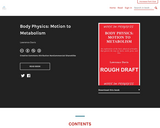
Short Description:
Body Physics sticks to the basic functioning of the human body, from motion to metabolism, as a common theme through which fundamental physics topics are introduced. Related practice, reinforcement and Lab activities are included. See the front matter for more details. Additional supplementary material, activities, and information can be found at: https://openoregon.pressbooks.pub/bpsupmat/. Order a print copy: http://www.lulu.com/content/paperback-book/body-physics-motion-to-metabolism/26081318
Long Description:
Body Physics sticks to the basic functioning of the human body, from motion to metabolism, as a common theme through which fundamental physics topics are introduced. Related practice, reinforcement and Lab activities are included. See the front matter for more details. Additional supplementary material, activities, and information can be found at: https://openoregon.pressbooks.pub/bpsupmat/. Specific topics covered in Body Physics are: scientific process, units, uncertainty, mass, density, weight, buoyant force, equilibrium, center of gravity, normal force, friction, torque, levers, mechanical advantage, tension, motion, impulse, momentum, the laws of motion, strength and elasticity of materials, work, kinetic and potential energy, power, thermal energy the first law of thermodynamics, efficiency, heat, entropy, and 2nd law of thermodynamics.
Order a print copy: http://www.lulu.com/content/paperback-book/body-physics-motion-to-metabolism/26081318
Word Count: 112607
ISBN: 978-1-63635-046-2
(Note: This resource's metadata has been created automatically by reformatting and/or combining the information that the author initially provided as part of a bulk import process.)
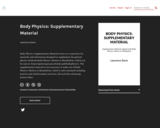
Short Description:
Body Physics: Supplementary Material serves as a repository for materials and information designed to supplement the general physics textbook Body Physics: Motion to Metabolism, which can be seen at: https://openoregon.pressbooks.pub/bodyphysics/. The supplementary material is not necessary to make use of Body Physics: Motion to Metabolism, which is self-contained including practice and reinforcement exercises, lab activities and group project ideas.
Long Description:
Body Physics: Supplementary Material serves as a repository for materials and information designed to supplement the general physics textbook Body Physics: Motion to Metabolism, which can be seen at: https://openoregon.pressbooks.pub/bodyphysics/. The supplementary material is not necessary to make use of Body Physics: Motion to Metabolism, which is self-contained including practice and reinforcement exercises, lab activities and group project ideas. Supplementary material includes: additional lab activities; content created by students through open pedagogy assignments; conference presentations about the design, development, and use of Body Physics; and research related to the use, assessment, and improvement of Body Physics (coming soon).
Word Count: 60301
(Note: This resource's metadata has been created automatically by reformatting and/or combining the information that the author initially provided as part of a bulk import process.)